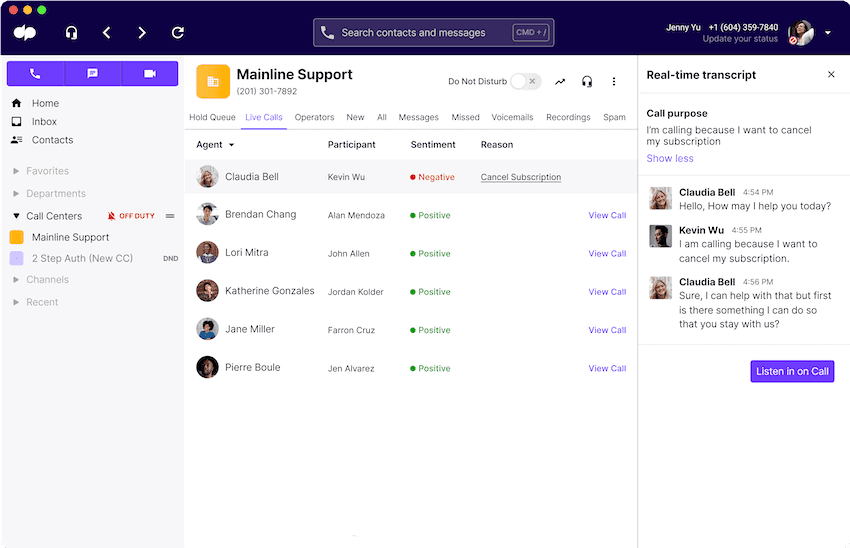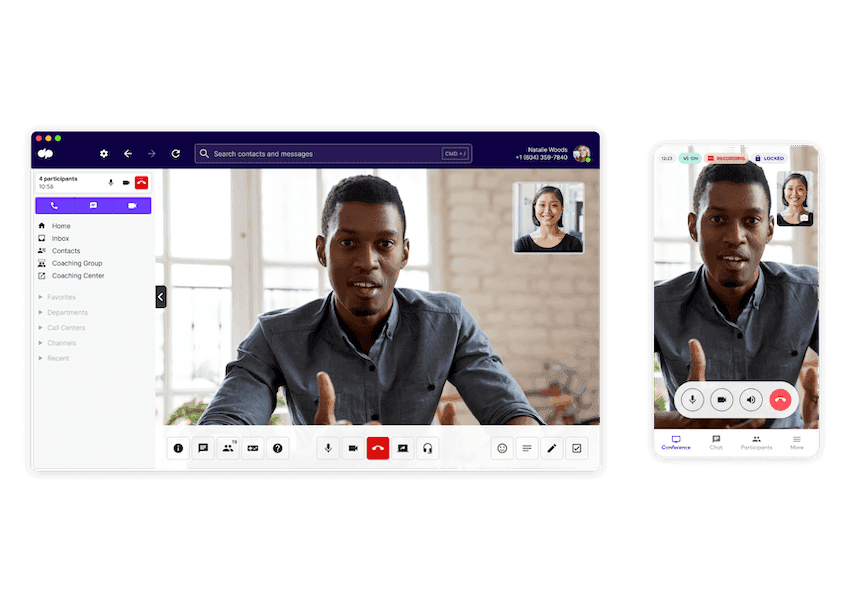UC and CC: What people aren't telling you

Senior Product Marketing Manager - Ai, Voice & TrueCaaS

Share
Congratulations! You’re on your way to digitally transforming your on-premises PBX and contact center environments and are on the lookout for the best provider on the market. You know what you need: A way to seamlessly integrate these two solutions into the cloud on a single unified platform.
Sounds simple, right?
Well, not really. Here’s the thing: Many cloud contact center and unified communications vendors are not necessarily telling you the whole truth about their “fully integrated UC + CC platform in the cloud.”
You’ll find that “fully integrated” doesn’t always mean the same thing when you compare these unified communications (UC) and contact center (CC) platforms. And if you invest in a solution that overpromises their combined capabilities, you could be on track to deliver poor customer experiences.
Providing solutions that reduce costs, improve both the agent and employee experience, and provide delightful customer experiences is more important than ever in this hybrid workplace. And with customer expectations changing, going with a vendor that is constantly innovating to ensure their own customers are happy should be a priority.
💡 Fun fact:
Built from the ground up with both enterprise-grade business communications and contact center capabilities, Dialpad is the only truly integrated UC and CC unified platform in the market today (or as we call it, TrueCaaS). More on this in just a bit.
Now, what are other vendors overpromising, you may ask?
Many vendors end up whitelabeling solutions to make up for features (like contact center functionality or video meetings) they don’t actually have—and then call the solution their own, when in reality the solution is not fully integrated into their own stack.
When a company whitelabels a solution, they do not control the roadmap and innovation of that product—they’re fully dependent on their supplier’s feature set. Not only that, most white-labeled solutions are at least one version behind the vendor’s own product (sometimes even two or three versions behind). What that means: You’re essentially getting a watered-down and outdated version of the product, simply because you’re not buying from that vendor directly.
These partnerships may seem like they can solve the issue at first glance, but typically, you’d be dealing with multiple contracts, separate vendors, and disjointed solutions that don’t provide the fully integrated solution you were originally looking for.
💡 Food for thought:
If you’re with a UC vendor that whitelabeled their CC solution, who do you go to when your contact center goes down? How easy is it to get to a product expert?
What should you watch out for?
So, what are the tell-tale signs that you might be dealing with a vendor that’s promising a “fully unified or integrated UC + CC solution” when that’s not actually true?
A separate app for handling inbound customer calls
If you’re using one app as your UC platform to send messages and have video meetings with your teammates, and a separate app to manage your contact center agents, then that’s an obvious red flag that your vendor doesn’t actually have an integrated platform.
For example, Dialpad Support is truly integrated into the UC side of the house—you can handle your customer communications and get all your video conferencing and messaging functionality in the same app:

Inconsistent UI
On a related note, if you notice that the user interface (UI) doesn’t look the same when you’re handling a customer call compared to calling or messaging a teammate, that’s another sign that your vendor is using a third-party software vendor as part of their “unified product.”
This matters because if, say, your messaging app looks and works a certain way, but your contact center software has a completely different layout, that not only creates a steeper learning curve for your team (who now has to learn to use different distinct tools), but also adds friction to their workflows, which impacts their ability to provide a smooth, efficient customer experience.
Disjointed experiences for your customers
Another scenario is when an agent is trying to bring a subject matter expert onto a challenging customer call or needs help with a question. Let's say you're a contact center agent for a large pharmacy chain and a customer asks a question about their prescription that you're not qualified to answer.
In an ideal world, you’d be able to see whether your colleague or manager is available or in a meeting, and easily message them to get support on the call—within the same app you’re using to talk to the customer. This will help you get answers more quickly and give your customers a better experience.
If you’re using a vendor that doesn’t have a truly unified app, this would look very different. The agent would have to transfer the call to another department, hope the call doesn’t drop, and put the customer on hold until the other person picks up. Or, they’d have to move forward without being able to answer the question. Both of which aren’t great for keeping your customers happy.
Difficulty in getting customer support when you need help
Finally, one of the major pain points with a “UC and CC vendor” that isn’t truly unified is that you’d have to go through different support teams when you have a technical issue or question.
Let's say you purchased a white-labeled contact center software through your UC provider and your agent just came across a technical issue that you can't fix as an admin. You'd have to go to your UC vendor's support team to fix the issue—and typically, this plays out in one of three ways:
The UC support agent is knowledgeable enough to fix it for you (which is rare)
The UC vendor can't fix it and tries to access the third-party vendor for help
The third-party vendor’s support team will prioritize their own customers first, meaning you'll have to wait to get support and just deal with the issue and possibly upset customers in the meantime
These are just a few signs to look out for when you’re vetting communications vendors and trying to decipher whether or not they actually have an “integrated UC + CC” platform. And together, they have a huge impact on both your employee and customer experience.
Bottom line: When your support agents are trying to efficiently manage their customer communications, internal apps, and CRM on a daily basis, a seamless and integrated experience makes a huge difference in whether they can provide exceptional customer experiences.
So, what does a truly unified UC and CC solution look like?
A truly integrated Unified Communications as a Service (UCaaS) and Contact Center as a Service (CCaaS) solution should:
Be on an enterprise-grade single platform.
Include all of the features, functions, and capabilities that you’re accustomed to getting from both your on-premises PBX and contact center solution.
Integrate with the other apps you use on a daily basis such as Google Workspace, Salesforce, Zendesk, HubSpot, and more.
Be fully accessible through a single app, meaning you should be able to make voice calls, have video meetings, and handle customer interactions across voice and digital channels without toggling between different windows or tabs. For example, Dialpad’s communications platform lets you do exactly this:

TrueCaaS: The ultimate UC and CC solution
The market for communications vendors is huge. There’s no doubt about that. But one thing that consistently sets Dialpad apart when we talk to prospects and customers is the fact that we’re the only leading solution that is truly unified. We call it “TrueCaaS,” and not only is it truly unified, it’s also built with AI at its core. This unique aspect of our product empowers organizations to take advantage of an intelligently powered, truly modern cloud communications infrastructure.
With TrueCaaS, hybrid teams and organizations of all sizes have access to not only a unified communications platform with calling, SMS/MMS and instant messaging, and video meetings, but also customer engagement solutions with powerful AI capabilities. All in a single app.
Ready to simplify your communications, improve productivity, and delight your customers?
Book a demo to get a personal walkthrough of Dialpad or, take a self-guided interactive tour to play with the app first!
